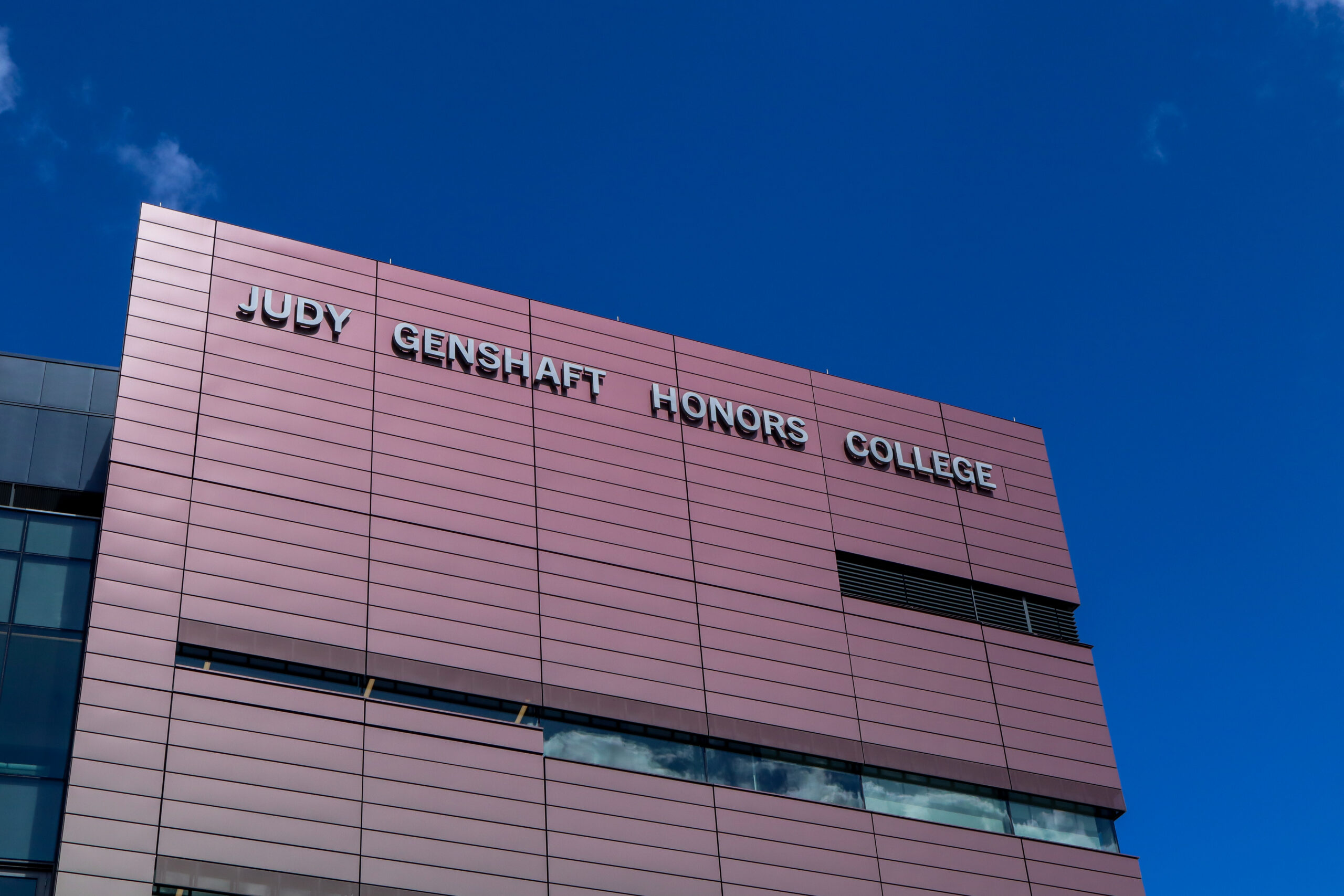Students, faculty endured months of delays for the Honors College. Is it up to par?

The new Judy Genshaft Honors College (JGHC) building finally opened its doors to students early this semester after facing multiple delays – but was the wait worth it?
The $56 million building was closed over the summer after its opening ceremony in May due to supply chain issues and testing of building systems. This relocated Summer B classes to the John & Grace Allen building, where the Honors college used to be housed.
Related: Judy Genshaft Honors College not operational after promised opening date, classes forced to relocate
Junior biomedical sciences major and honors student Amelia German visits the building frequently for its spacious study units.
“The new furniture and new spaces to study makes it feel more home-y here, because some other places on campus are a bit more uncomfortable,” German said.
The honors college offers a studying alternative to the library, according to junior communications major Braxton Duncan. He said there is more space in the honors college for “collaborative work” in the learning lofts than in the library.
The aesthetic appeal of the honors college and the convenience of the Buddy Brew cafe are popular with students, according to freshman business management major Garbriella Lynch.
“I love the calm colors,” Lynch said. “It’s very relaxing and helps me focus.”
Jeffery Donley, humanities professor at the JGHC, said he noticed the building’s popularity affects the accessibility of its facilities.
“It’s packed,” Donley said. “I’m always here early. But throughout the day, I don’t think I’ve ever seen the learning lofts empty. Some of my students have said students from other colleges are coming here too.”
Associate professor Michael Cross said he enjoys being able to rearrange the desks in the new honors college building to better accommodate various teaching styles. He said this was not possible in the smaller, more constricted rooms of the Allen building.
“Learning is more important than just delivering information. It is about being able to engage with a problem, solve that problem and then report on your solution to that problem. And so the configuration of a classroom is very, very important,” Cross said.
The new facilities on the fifth floor of the honors college include a food lab, podcast room and a music production studio.
The proximity of these facilities and the classrooms in the new building encourages growth across all honors classes, according to Donley.
“There’s an integration we do here…where all the disciplines come together into a coherent whole under the same roof,” Donley said.
The honors college building facilities inspired non-honors student Madeline Messick, a first year digital marketing major, to inquire about the honors programs.
“I didn’t know much about honors,” Messick said. “And once I started coming in here, I saw that it was a nice atmosphere and I liked how hardworking everyone is.”
Due to the popularity of the honors building, Duncan said it’s nearly impossible to find a seat after 10 a.m. He said the spaces fill up fast because there are 39 learning lofts.
“We have to go to multiple floors and walk around to look for a seat. And then when we see someone get up and leave, we have to run to grab a booth. They go really fast,” Duncan said.
“I feel like adding study rooms would be nice so the students can utilize the space.”
While the initial hours of the honors college were 7:30 a.m. to 5 p.m. for all students and until 8 p.m. for honors students, the university has changed these hours to a 5 p.m. closing time for everyone.
The atmosphere of the honors college is unique compared to other buildings on campus, according to Donley.
“There’s a nuance, there’s an ambience, there’s a feeling that’s different. When students have their own building like other colleges do, it says ‘Yeah. We’re here. We’re on the map. We belong,’” Donley said.







